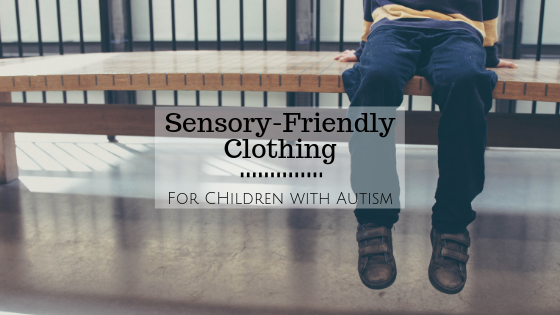Any parent of a child with Autism or SPD knows that your child’s needs are unique and will vary from others. However, the feeling of certain clothing materials can cause overwhelming stimulation to your child, which can lead to an increase in stress. Getting dressed is a simple task that does not directly impact most children. However, for children with Autism, their outfits can affect the remainder of their day. As a parent or guardian, being mindful of your child’s clothing may be worth exploring to see if it aids in their behavior.
Sensory-friendly clothing can address a plethora of common issues that regular clothing may not when it comes to children with Autism or SPD. It may be difficult for your child to verbally express which articles of clothing, if any, are uncomfortable. Knowing which dress is affecting your child’s daily behavior may take a series of trial and error shopping trips. Here are some common attributes to look for:
- Soft clothing – Clothing with rough stitching, edges, labels, or material can be hard for your child to ignore. Seamless garments, especially where a seam would usually fall on a joint or bend, can be especially beneficial.
- Easy to dress – Many children with Autism or SPD have difficulties with some motor skills or operating accessories like zippers or buttons. Recognizing this in your child and buying them clothing without these accessories will help them to learn to dress themselves.
- Pressure – Clothing that offers a slight feeling of pressure can provide children with Autism a sense of security and safety. However, parents should be sure that the clothing is not too tight as to where it distracts them or even prohibits full movement.
When children with Autism or SPD are wearing the wrong kind of clothing, it can distract them throughout the day and raise their stress. Some articles of clothing can also promote fidgeting actions which can take from their attention span as well.
When exposed to sensory-friendly clothing, children with Autism or SPD often experience lower levels of stress and sensory overload. Moreover, the garments also provide the child with a sense of safety and security. Having this feeling of safety will aid the child in completing everyday developmental tasks – like attending a school or socializing with others.
There are uncontrollable elements in nature that can trigger a sensory reaction with children with SPD or Autism. While not all of these factors can be monitored or avoided, there are several that can be stifled. Making the necessary accommodations to your child’s wardrobe is one of many ways to aid in their comfortability and development. It also allows children to express themselves while picking clothing that is appropriate for them.
